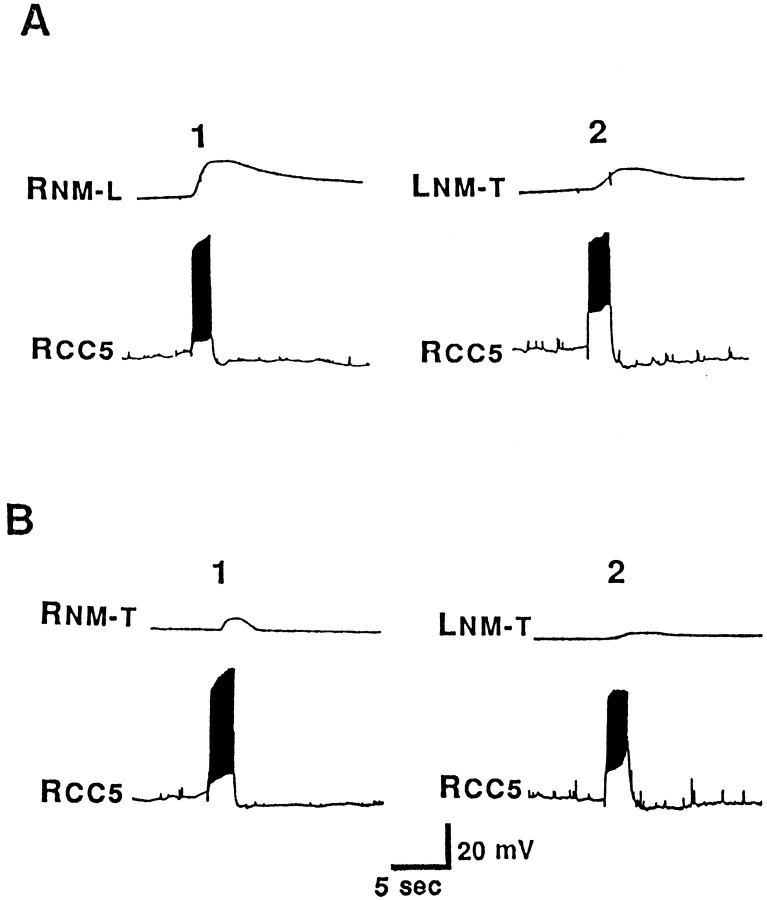Fig. 6.
Isotonic tension records showing that firing of CC5 could evoke contractions of muscles in different regions of the neck. Bilateral pleural nerve 1, pedal nerves 4, 5, and 7, and the neck muscles they innervate were intact. The right CC5 was impaled, and a force transducer was placed to selectively record movements in the transverse or longitudinal direction (indicated by L orT suffix) of the ipsilateral (right) or contralateral (left) muscle (indicated byR or L prefix). For each trial, CC5 was fired at ∼15 Hz for 2 sec. A1, Longitudinal contractions in the ipsilateral neck muscles (RNM-L).A2, Transverse contractions in the contralateral neck muscles (LNM-T) B1, B2, Transverse contractions of the ipsilateral (RNM-T) or the contralateral (LNM-T) neck muscles near the region where the pedal artery enters the muscle (n = 5).

